Table of Contents
Introduction
What is Hydroponic Farming?
Hydroponic farming is a modern practice of agriculture whereby plants are cultivated without soil. However, they develop in nutrient-rich water solutions that provide them with all the necessary minerals to support growth.
This has been a very popular method across the globe as it favors farming in controlled environments, even in regions where fertile lands are limited. By eliminating soil dependency, hydroponic farming allows crops to be grown inside, in greenhouses, and even inside apartments in urban areas or backyard rooms.
Urban gardeners and commercial farmers are adopting this novel method due to its increased harvests, quicker growth in plants, and water-efficient consumption in comparison to traditional farming.
The increased sensitivity to food security, sustainable agriculture, and nutrition has made hydroponic farming a trendy method of future agriculture. It is not only a scientific success but also a viable solution to urbanization and resource-poor agriculture.
Why Hydroponic Farming is Relevant Today
Currently, the strain on agriculture is rising at a swift rate as a result of population increase, declining arable land, and climate change. Traditional farming is confronted with disadvantages like soil erosion, unpredictable rainfalls, and excessive use of chemical fertilizers.
Hydroponic farming presents an effective alternative in that it comprises a controlled environment system where plants develop in security from external hazards. As vegetables, herbs, and fruits are cultivated indoors, home hydroponic farming has become a fresh trend for healthy families and urban people.
It also encourages sustainable agriculture because it uses almost 90% less water compared to soil agriculture. Additionally, the price of hydroponic farm reduced with time as DIY kits are available simply and affordable house systems, which may make it ideal for students, small farmers, and beginners.
Its efficiency, sustainability, and accessibility guarantee hydroponic farming as a leading solution for food production in the future.
Advantages of Hydroponic Farming
Increased Crop Yield and Improved Growth Rate
The most notable benefit of hydroponic farming, if one may say so, is its high crop yields compared to soil-based agriculture. In this instance, the plants have a constant flow of necessary nutrients directly from water solutions, therefore no lag time is brought about by soil uptake.
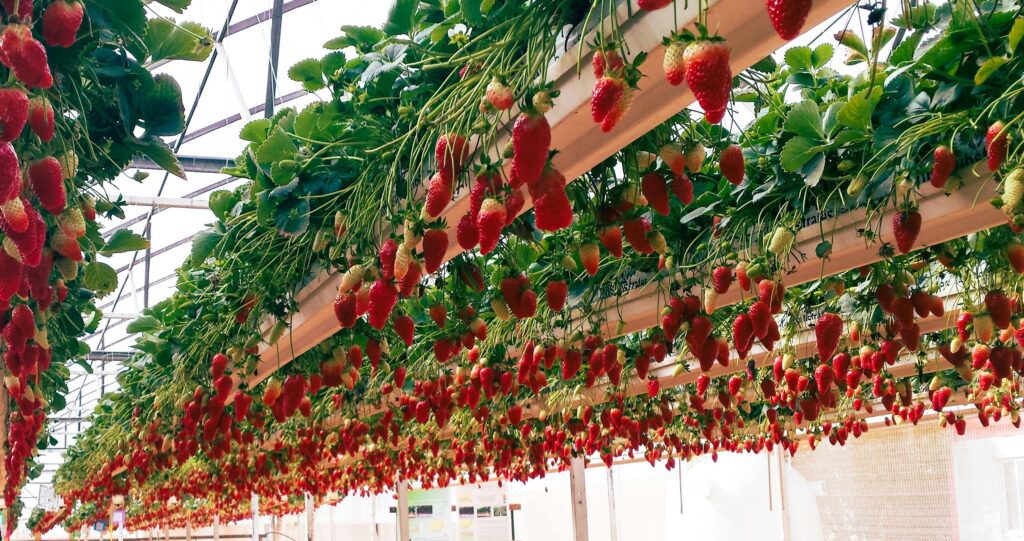
The method provides a consistent environment where the crops grow quicker and stronger, resulting in multiple harvests within less time.
For farmers, it translates to greater productivity, and for people who are growing hydroponic farming indoors, it represents a constant amount of fresh vegetables and herbs throughout the year.
Through optimizing factors like pH levels, light intensity, and nutrient concentration, hydroponic farming not only speeds up growth, but also enhances the overall quality of crops.
Unlike soil farming, which is constrained by weather and pests, hydroponic farming ensures even yields, thereby making it a highly dependable method for commercial, as well as domestic, agriculture.
Maximum Use of Water and Resources
Water shortage is one of the most serious challenges facing agriculture in the present day, and hydroponic farming has been shown to be a viable answer.
In contrast to conventional farming, in which the water used for irrigation is largely lost to evaporation and to the ground, hydroponic crops recycle the water in a closed-loop system.
Due to this, the same water gets reused and recycled up to several times with as much as 90% less usage than in conventional farming. Such water economy is cost-effective in the long term, particularly in the urban environment or areas where freshwater supply is lacking.
For household consumption, indoor hydroponic agriculture presents the promise of producing food without incurring high bills on water or loss. Also, because no soil is employed, no pesticides and herbicides are required, hence an even lower chemical use.
In conservation of water and resources too, hydroponic farming would be most complementary to sustainable agriculture practices, enabling the farmer and gardener to cultivate food without stressing the environment.
Space-Saving and Urban-Friendly
Hydroponic farming also has another excellent advantage in that it is capable of producing maximum yield of crops in minimum space.
Urban metropolises, in which land is scarce, are the richer for containing home hydroponic agriculture as the ideal means for families and individuals to produce their own vegetables and fruits.
Vertical hydroponics, for instance, enable one to sow several layers, such that many vegetables and herbs can be cultivated in a rooftop, balcony, or even kitchen alcove.
Space efficiency is what this process has introduced, with the majority of city residents now incorporating hydroponic farming in their households, converting idle spaces into mini-farms. Gone are also the mess and maintenance issues of conventional gardening.
Hydroponic farming prices for small systems have also become affordable due to the availability of do-it-yourself kits and simple configurations, making it possible for novices to reap the rewards. By using cities to plant productive gardens, hydroponic farming makes farm-to-table experience accessible at home and encourages self-sufficiency and healthy living.
Methods of Hydroponic Farming
Deep Water Culture (DWC)
Deep Water Culture is one of the simplest and most common methods in hydroponic farming. In this technique, plant roots are left floating in a solution of nutrient water, and an air pump supplies oxygen in a manner that does not smother the roots.
With the water, nutrients, and oxygen always available, the plants grow very rapidly as well as grow healthy roots. This system is also very popular for domestic hydroponic cultivation because it requires very little equipment and can be easily installed using mere materials like buckets, air stones, and pumps.
Hydroponic cultivation using a DWC system is also very inexpensive in terms of cost, and it is cost-effective and beginner-friendly for small farmers. DWC is best suited for leafy vegetables such as lettuce, spinach, and herbs since such crops love constant watering.
For urban farmers, the technique is an easy means of growing fresh fruits and vegetables without soil or much land.
Nutrient Film Technique (NFT)
Nutrient Film Technique is another popular system in hydroponic agriculture, particularly with commercial farms. In this system, there is a constant spray of thin nutrient solution over the plant roots, which is supplied with water and oxygen.
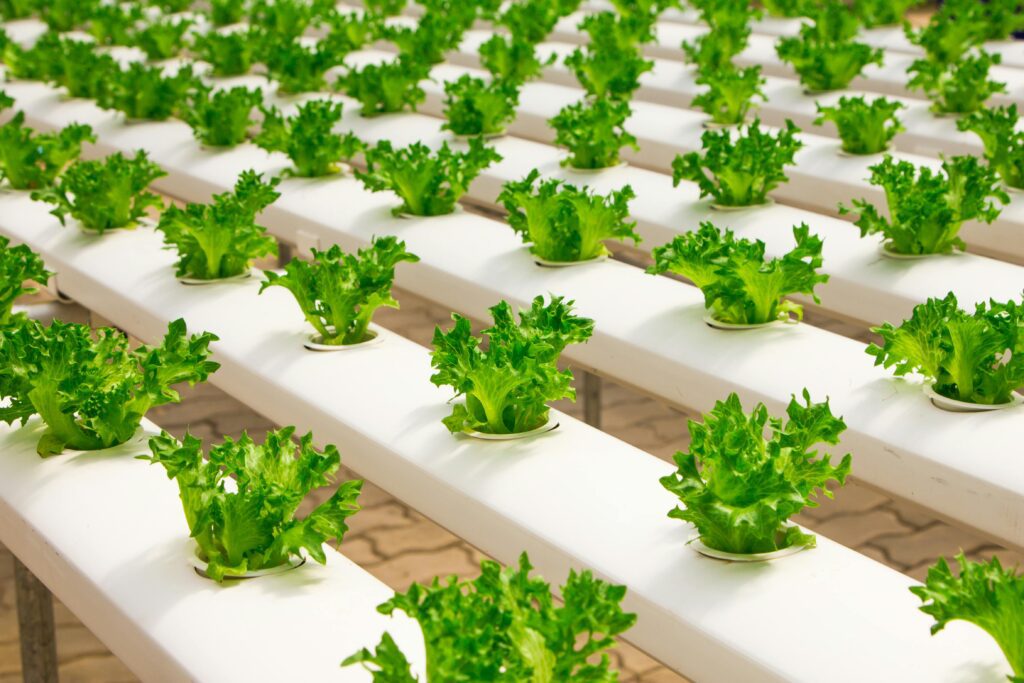
Since only a thin fraction of the roots is under water, plants are not waterlogged, and oxygen supply is automatically regulated as well. NFT is also very water- and nutrient-conserving, therefore one of the most environment-friendly hydroponic systems.
Most individuals starting hydroponic cultivation at home are comfortable using NFT since it provides the possibility of vertical frames and can function in confined spaces.
Hydroponic cultivation for an NFT system could be more costly to start with because it requires pumps and channels, but it is cost-effective in the long term because water usage is less, and there is less wastage of nutrients.
This system is best suited for light crops such as herbs, strawberries, and leafy greens.
Wick System
The wick system is likely the most basic type of hydroponic farming and is normally the one that will be suggested for novices or for those who are experimenting with hydroponic farming at home for the first time.
This procedure involves a wick of porous material pulling nutrient solution from a reservoir to plant roots. It uses no electricity, pumps, or advanced equipment, so the cost of hydroponic agriculture for this system is very low.
Although it is not as efficient at supporting large plants with high water needs, it is good for small flowers and herbs. It is particularly popular with hobbyists who don’t want to spend much money on trying hydroponics.
While uncomplicated, the wick system can still offer the greatest advantages of hydroponic gardening, including soilless growth, less pest infestation, and convenient indoor installation.
Aeroponics
Aeroponics is a sophisticated hydroponic method of agriculture by which the plant roots are allowed to remain in the air and are sprayed with a nutrient solution at periodic time intervals. This gives the plants optimum exposure to air while ensuring efficient delivery of nutrients.
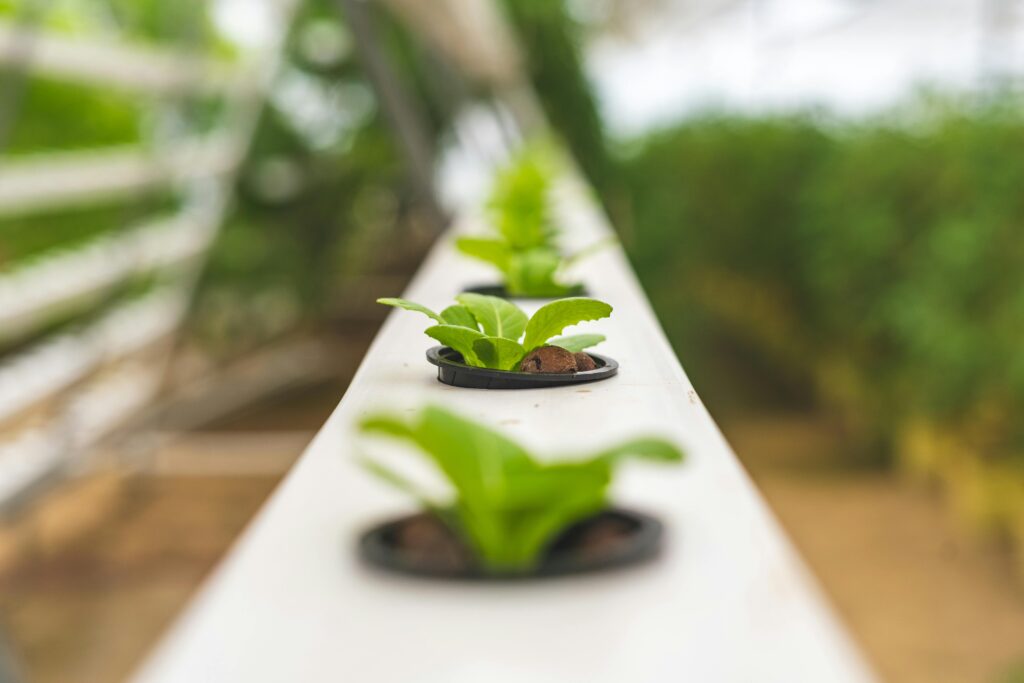
Aeroponics enables very rapid growth of the plants and is also extensively practiced in high-tech commercial agriculture. While the cost of aeroponic hydroponic farming is quite expensive because of the special misting equipment required, it has great yields and utilization of resources.
There are miniature aeroponic systems for home experimentation with hydroponic agriculture, though they will be more in need of service and technical expertise. Aeroponics would be best for crops such as tomatoes, peppers, and greens, which would grow best in an oxygen-rich environment.
Aeroponics also has an eye to the future of farming with its vision extending to space farming and city farming.
Drip System
The drip method is another efficient hydroponic farming practice that is being adopted extensively in commercial and also home setups. Through the drip method, the nutrient solution is delivered to plant roots directly via a series of tubes and drippers.
The flow of the solution can be adjusted to match the crop requirement without losing water and nutrients.
Most growers of hydroponic farming indoors find drip systems convenient to use and easy to manage because they can hold a large concentration of crops, such as the likes of big vegetables like tomatoes and cucumbers.
Although the upfront cost of hydroponic farming for the installation of a drip system may be medium to high depending on the scale, long-term, it pays because one can precisely manage resource consumption.
Drip systems are especially common for urban rooftop gardens and greenhouses, where efficiency and space need to be maximized. Challenges in Hydroponic Farming
The Initial Setup Cost
One of the main challenges in hydroponic agriculture is the initial cost to implement the system. Although hydroponic agriculture expense has reduced as much with the home kits and the DIY method, a complete system still involves money in terms of equipment like grow lights, pumps, nutrient solutions, and containers.
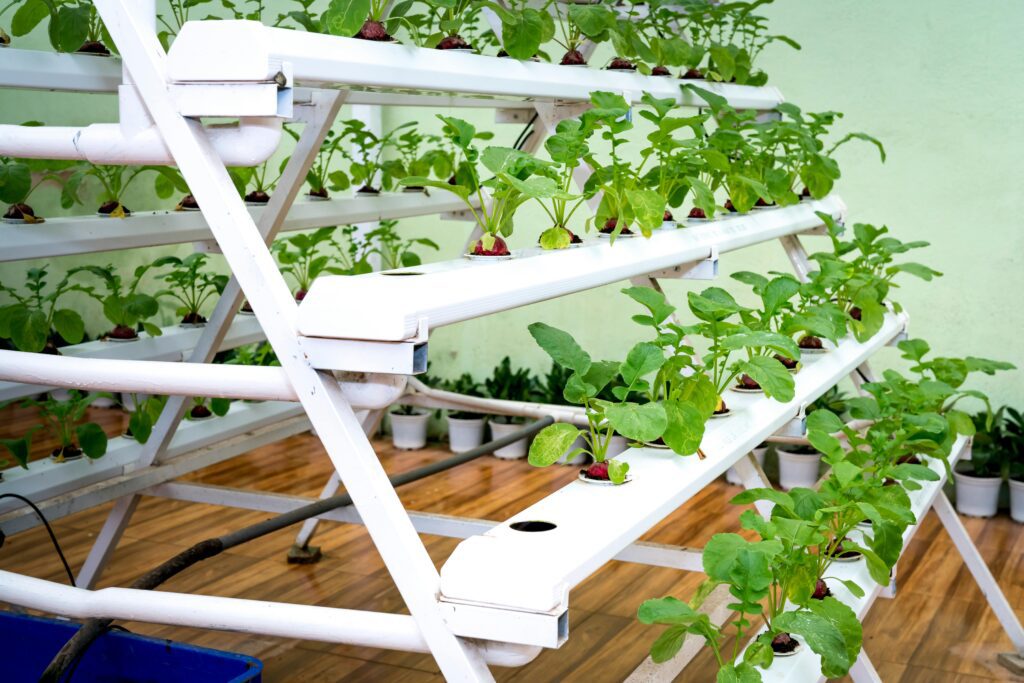
For commercial farming scale, the expenses can be even greater, as newer systems like aeroponic or NFT need specialized equipment. For the backyard experimenter, the initial investment can be intimidating, but in due course, the system recoups with steady returns.
Acquiring expertise to judge the right size and selecting a system in the price bracket will prevent financial woe.
Technical Knowledge and Maintenance
Hydroponic farming differs from conventional soil farming in that it takes more technical data about plant nutrition, water chemistry, and system maintenance. Domestic gardeners and farmers have to check pH, nutrients, and water temperature on a frequent basis in order to yield good growth.
This can be too complex for novice farmers and lead to the demise of crops if not well maintained. Hydroponic cultivation at home also comes with a lot of equipment, tank, and pipe regular maintenance to check for algae development or bacterial activity.
Though learning resources are plentiful, the process is still one of the largest hurdles for new beginners.
Power Dependency
Electricity dependence is another major hurdle for hydroponic farming.
Most systems require pump, light, or air circulation to operate constantly for upkeep of plant life. Any breakdown in power supply can affect the health of the plant, especially in advanced methods like aeroponics where roots depend on regular sprays of nutrients.
For home growers who are adopting hydroponic plant growing, power outages could prove to be a grave issue unless the alternative solution like inverters or solar power is opted for. Therefore, arrangement for occasional power sources should be made prior to buying a hydroponic gadget.
Risk of Disease Spread
Disease spreading in soil farming is slow but, in hydroponic farming, one infected plant can infect the whole reservoir of water very quickly. Since the plants are provided with one shared nutrient solution, bacteria, fungi, or viruses can spread quickly and infect several crops.
This is for more commercial establishments but also becomes a danger to hydroponic home farming when good hygiene is not taken into account. Regular cleaning, sterilization, and round-the-clock monitoring are required in order to minimize disease risks.
Hydroponics eliminates pests but not entirely, and it requires round-the-clock protection from water-borne illnesses.
Market and Knowledge Gap
For the majority of farmers, adopting hydroponic farming also means the challenge of getting to the market. Customers in some regions may not be fully aware of hydroponic fruits and vegetables or be reluctant to pay a premium for them.
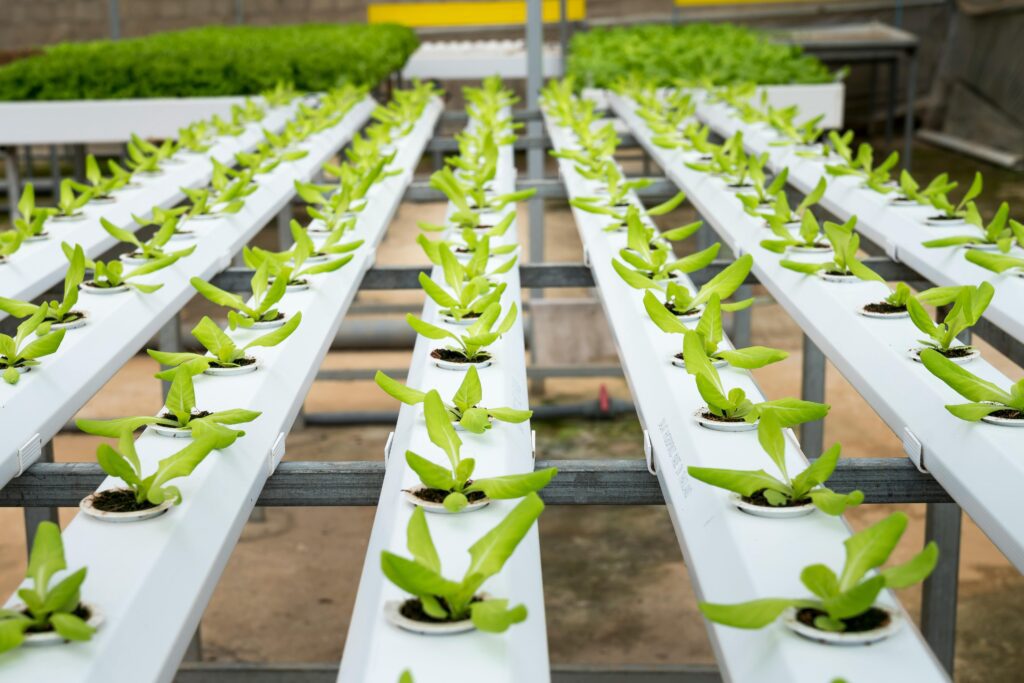
Likewise, small-scale farmers may have a problem finding top-class nutrients and equipment at affordable prices. For the amateur attempting to try hydroponic farming from home, insufficient information or credible sources can be frustrating.
Plugging this gap with training, workshops, and public awareness campaigns is extremely critical in bringing it to mainstream practice.
FAQs on Hydroponic Farming
1. What is Hydroponic Farming and how does it function?
Hydroponic farming is a soilless crop production technique where minerals are given directly through a water-based nutrient solution. Rather than deriving minerals from soil, plants get all the elements like nitrogen, phosphorus, and potassium from the nutrient solution in water.
Roots float on top of this solution or get sprayed with it, depending on the technique employed. With water and nutrients tightly regulated, crops grow on a steady basis and more quickly than they do in conventional agriculture.
Home hydroponic farming is commonly on the basis of miniature systems such as Deep Water Culture or Wick systems, which are simple for amateur farmers to take care of.
2. Is Hydroponic Farming at Home costly?
Hydroponic farming expense is based on the system used. A basic wick or DWC system for home use may be readily constructed from common materials at minimal expense. Sophisticated systems such as aeroponics or NFT utilize pumps, lights, and other technology that make it more costly.
Nevertheless, long term, indoor hydroponic gardening saves one money by providing fresh vegetables and herbs without frequent purchasing at the market. The majority of indoor gardeners feel that the cost is justified as it supports sustainability, health, and long-term savings.
3. Which crops are suitable for Hydroponic Farming?
Hydroponics enables you to cultivate a varied range of crops, including leafy greens such as spinach, lettuce, and kale and herbs such as basil, mint, and coriander. Fruit produce such as strawberries, cucumbers, and tomatoes also flourish under hydroponic systems.
Hydroponic farming at home is usually done by most individuals using small crops that have short growth cycles to have a continuous harvest of fresh products.
The type of crop can also be specified based on the available system and cost of hydroponic farming invested, since the crop occupies more space, nutrients, or advanced techniques in some cases.
4. How much maintenance is Hydroponic Farming?
Hydroponic farming demands constant water levels, nutrient levels, and pH monitoring. This might appear technical at first but, once the farmer is familiar with the system, maintenance is a simple routine.
With home hydroponic farming, simple maintenance like washing containers, inspecting pumps, and removing sick plants ensures trouble-free working. In comparison to soil farming, there is reduced weeding, no soil tilling, and fewer insects, essentially making hydroponic farming simpler in the long term.
5. Is Hydroponic Farming profitable in the long term?
Yes, hydroponic farming can be very profitable, particularly in urban areas where there is a growing demand for chemical-free fresh vegetables and fruits. The original investment of hydroponic farming can appear to be expensive, but once done, it produces uniform crops throughout the year.
While selling hydroponic crops to restaurants, health food markets, or farmers’ markets, farmers are able to charge higher profit rates than those who practice conventional farming.
Even home hydroponic farming is an economic advantage with lower grocery bills and guarantees of availability of pesticide-free, clean food. With proper planning and right crop selection, hydroponic farming is a profitable and eco-friendly occupation.
Conclusion
Hydroponic farming is no longer a future idea—it is now a tried, tested solution to today’s agricultural woes. By removing the necessity of soil and using nutrient-rich water, this technique provides quicker growth, greater yields, and improved produce.
Utilized on an industrial level or even domestically with hydroponic farming, it brings agriculture to areas where conventional means are impossible.
Its effectiveness with water utilization, year-round production, and pesticide elimination make hydroponic gardening a highly sustainable method of addressing the future of food production.
Yes, there are expenses to be factored in—installation fees, technical expertise, and upkeep—but as we have discovered, they are within our means. Reasonable beginner sets, instructional materials online, and energy-efficient equipment are making hydroponic agriculture accessible to all—urban households to commercial-level producers.
Formerly beyond our reach, now within our grasp, through innovation and increasing awareness. If you want a means of growing your own fresh vegetables, shedding chemical farming, or even establishing a successful agri-business, hydroponic farming is the way to go.
Begin small, learn bit by bit, and you’ll be amazed at how lucrative and liberating it is. By taking hydroponic gardening on in your own home or performing it on a commercial scale, you’re not only energizing your own body and household—you’re helping create a greener, more sustainable world.
